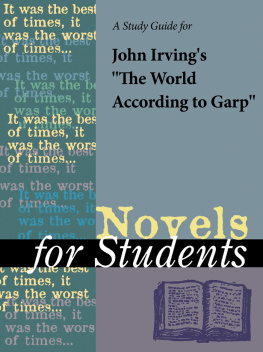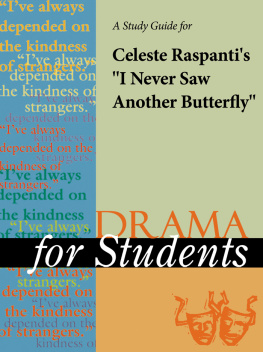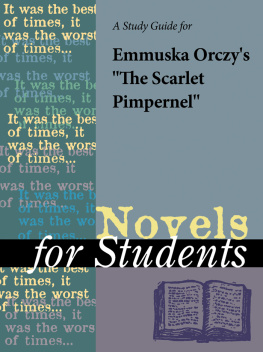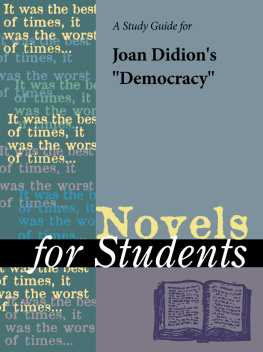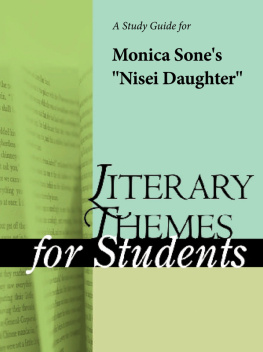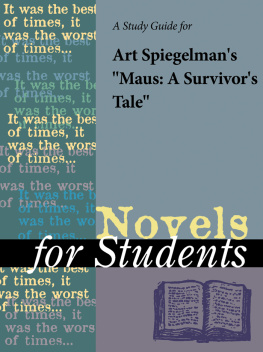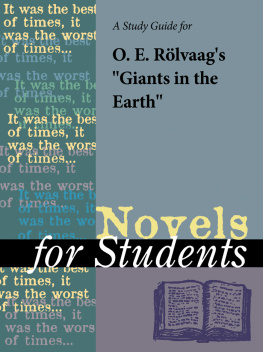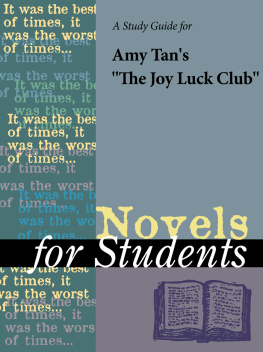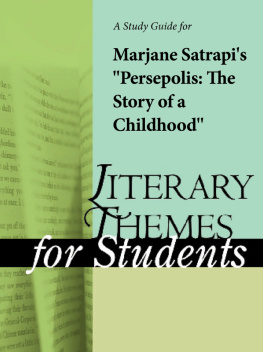TABLE OF CONTENTS
Guide
Novels for Students, Volume 12
Staff
Editor: Elizabeth Thomason.
Contributing Editors: Reginald Carlton, Anne Marie Hacht, Michael L. LaBlanc, Ira Mark Milne, Jennifer Smith.
Managing Editor, Content: Dwayne D. Hayes.
Managing Editor, Product: David Galens.
Publisher, Literature Product: Mark Scott.
Literature Content Capture: Joyce Nakamura, Managing Editor. Sara Constantakis, Editor.
Research: Victoria B. Cariappa, Research Manager. Cheryl Warnock, Research Specialist. Tamara Nott, Tracie A. Richardson, Research Associates. Nicodemus Ford, Sarah Genik, Timothy Lehnerer, Ron Morelli, Research Assistants.
Permissions: Maria Franklin, Permissions Manager. Jacqueline Jones, Julie Juengling, Permissions Assistants.
Manufacturing: Mary Beth Trimper, Manager, Composition and Electronic Prepress. Evi Seoud, Assistant Manager, Composition Purchasing and Electronic Prepress. Stacy Melson, Buyer.
Imaging and Multimedia Content Team: Barbara Yarrow, Manager. Randy Bassett, Imaging Supervisor. Robert Duncan, Dan Newell, Imaging Specialists. Pamela A. Reed, Imaging Coordinator. Leitha Etheridge-Sims, Mary Grimes, David G. Oblender, Image Catalogers. Robyn V. Young, Project Manager. Dean Dauphinais, Senior Image Editor. Kelly A. Quin, Image Editor.
Product Design Team: Kenn Zorn, Product Design Manager. Pamela A. E. Galbreath, Senior Art Director. Michael Logusz, Graphic Artist.
Copyright Notice
Since this page cannot legibly accommodate all copyright notices, the acknowledgments constitute an extension of the copyright notice.
While every effort has been made to secure permission to reprint material and to ensure the reliability of the information presented in this publication, Gale Research neither guarantees the accuracy of the data contained herein nor assumes any responsibility for errors, omissions, or discrepancies. Gale accepts no payment for listing; and inclusion in the publication of any organization, agency, institution, publication, service, or individual does not imply endorsement of the editors or publisher. Errors brought to the attention of the publisher and verified to the satisfaction of the publisher will be corrected in future editions.
This publication is a creative work fully protected by all applicable copyright laws, as well as by misappropriation, trade secret, unfair competition, and other applicable laws. The authors and editors of this work have added value to the underlying factual material herein through one or more of the following: unique and original selection, coordination, expression, arrangement, and classification of the information. All rights to this publication will be vigorously defended.
Copyright 2001
Gale Group
27500 Drake Rd.
Farmington Hills, MI 48331-3535
All rights reserved including the right of reproduction in whole or in part in any form.
ISBN 0-7876-4895-7
ISSN 1094-3552
Printed in the United States of America.
10 9 8 7 6 5 4 3 2 1
The World According to Garp
John Irving
1978
Introduction
Although John Irving's first three novels were relatively well-received by the critics, he was basically unknown to the general public until The World According to Garp became an international bestseller when it was published in the United States in 1978. The novel features the memorably eccentric characters, outlandish situations, and moments both joyous and heartbreaking that so many readers cherish. It is the tragicomic life story of author T. S. Garp, son of the controversial feminist Jenny Fields. Garp's world is filled with "lunacy and sorrow." His mother is a radically independent nurse who conceives him by taking advantage of a brain-damaged soldier. His best friend is a transsexual who was formerly a tight end for the Philadelphia Eagles. Garp struggles vainly to protect the people he loves. His life is both hilarious and ultimately tragic.
Irving's novel was especially popular on college campuses across the nation because of its youthful energy, and the novelist was applauded for creating realistic and strong female characters. Garp is an intricately plotted novel, and its themes are universal: love, sex, death, art, gender roles. The book shares many of the characteristics of Irving novels published before and after it. For example, in several Irving novels, children grow up without one or more parents, as in The Hotel New Hampshire (1981) and The Cider House Rules (1985). Garp is also influenced by Irving's experiences in Austria in the 1960s, as are Setting Free the Bears (1968) and The 158-Pound Marriage (1974).
For the most part, critics gave the novel excellent reviews. Millions continue to read Irving's books, and thus he remains one of the most popular and successful American writers of the last twenty-five years.
Author Biography
John Irving was born in Exeter, New Hampshire, on March 2, 1942. Although Irving has said that The World According to Garp is not autobiographical, there are many similarities between the novelist and the title character. Irving, like Garp, has never met his biological father. (However, Irving's mother gave him some letters his father had written during World War II and he used his father's experiences for a character in The Cider House Rules. "Being a novelist," Irving once said, "is never throwing anything away.") Irving also grew up at a prep school, Exeter Academy, where his stepfather taught Russian history. He eventually attended the school himself and there acquired his lifelong interests of wrestling and writing. He was an average student, but he later discovered that one of the reasons he struggled was because he was dyslexic.
Irving was disenchanted during his brief time as a student at both the University of Pittsburgh (1961) and the University of New Hampshire (1962). He traveled to Austria in 1963 to attend the University of Vienna and the decision profoundly affected him. He lived in Vienna off and on through much of the 1960s, and the city's influence is seen in his fiction. He also married painter Shyla Leary while he was in Austria. He became the father to two boys, Colin and Brendan. He earned his M. F. A. at the University of Iowa Writers Workshop in 1967 where Kurt Vonnegut, Jr. was one of his mentors. In 1969, he stayed with director Irvin Kershner in a castle built by Charlemagne while they vainly worked on an unproduced screen adaptation of Irving's first novel, Setting Free the Bears (1969). His next two novels, The Water-Method Man (1972) and The 158Pound Marriage (1974) didn't share his first book's modest success. During this period, Irving was awarded a Rockefeller Foundation grant (19711972), a National Endowment for the Arts fellowship (197475), and a Guggenheim fellowship (197677).
The publication of his fourth novel, The World According to Garp, changed everything for him. Irving left publishing giant Random House for E. P. Dutton because he was unsatisfied with the publicity for his second and third novels.

